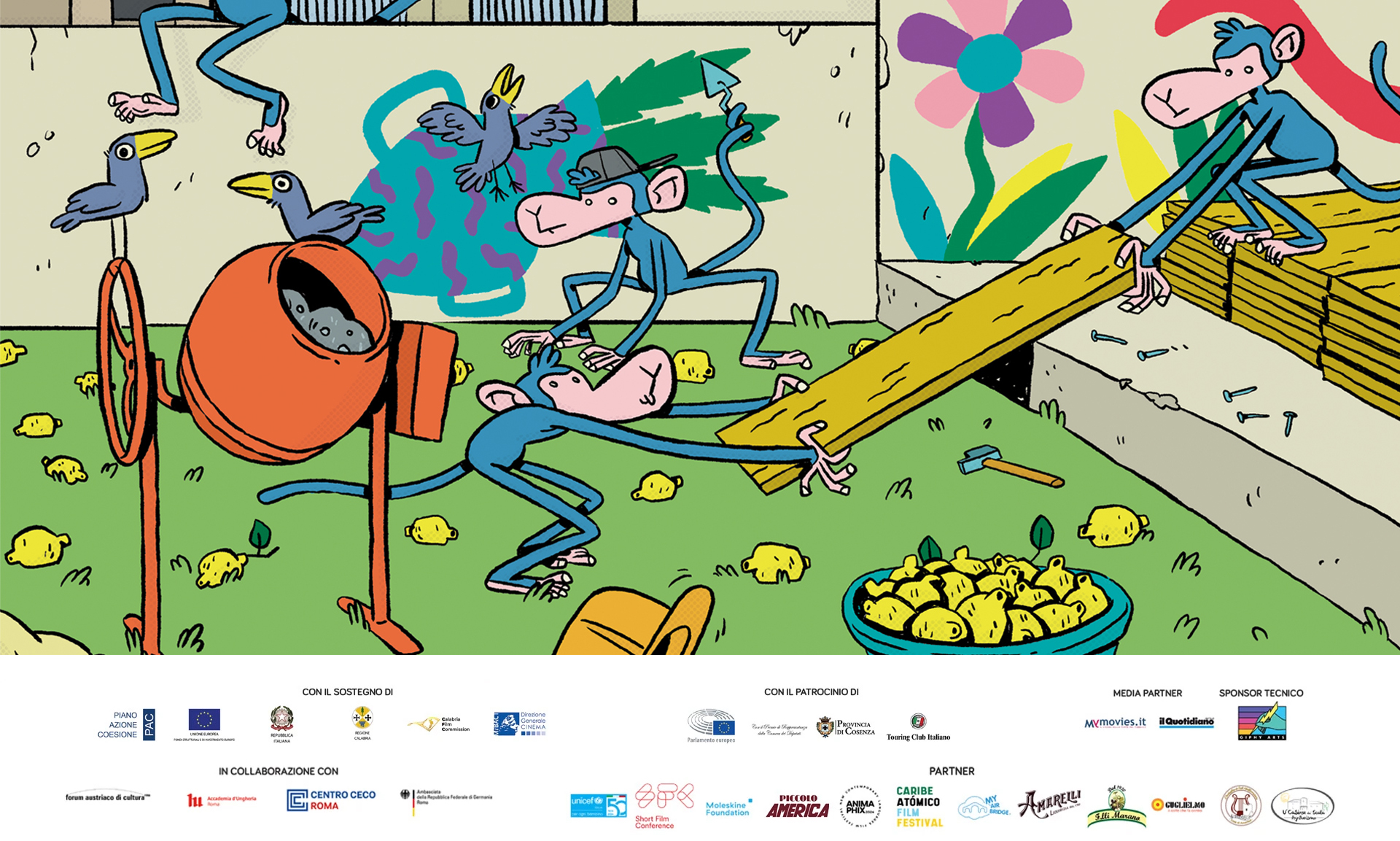The project, supported by Fondazione Carical, was launched in 2021, following an analysis of the needs and shortcomings of local students and workers.
We have been working closely with Amantea’s society for ten years, and our experience has enabled us to analyse the state of the community’s cultural offerings and social aggregation. Our impression as young people living and working in the area has always been that of a context with great potential but severely limited by the lack of investment and management in several areas.
The weakest segments of the community (young people, migrants, and the elderly) suffer from neglect and the absence of initiatives dedicated to them, which can only be experienced online and at an unaffordable cost. Moreover, the absence of spaces dedicated to them, such as accessible public parks or playgrounds, makes it difficult for them to get together beyond personal initiatives.
The situation is even more difficult in the inland area, where there are several municipalities living in even worse situations of isolation and abandonment. The inhabitants of the municipalities of Aiello, Cleto, Belmonte, Longobardi, Fiumefreddo Bruzio and the entire surrounding area, totalling about 10,000 people, refer to Amantea as a commercial centre where they go at weekends and during the summer.
Taking this information into account, we carried out a survey to understand what the community really needed, creating a questionnaire aimed at young people up to the age of 25, school students, university students and young workers, structured with questions to help us understand their needs and expectations.
We collected a sample of 100 valid answers, representative of our target group. From the questionnaire, it emerged that 92% of students in Amantea are forced to study at home, showing problems such as distraction, lack of a fast connection and a personal desk.
91% of them answered that they would go to a study room or library to study. By means of proposals structured on value scales, we found that many of the students needed quiet, centrally located spaces in Amantea with internet connection and where they could socialise with other young people their age.
70% of them expressed a liking for a library where they could also borrow books and comics.
92% of the young people also expressed a desire for a cinema, while all those practicing artistic disciplines such as music, dance and theatre (around 25% of the total) were willing to use a dedicated rehearsal space. 59% of them also expressed a desire to attend courses and workshops in artistic disciplines.
With this information, we began to imagine the space, how it could be organized, what it should contain and how it should be used. The initial idea was to build a new floor inside the building that houses our offices, so as to gradually compose our very own house of culture in Amantea.
However, the project immediately ran up against bureaucratic obstacles and delays that would have considerably slowed down the birth of the space.
Therefore, upon the offering for sale of a space in the building adjacent to our offices, it was concluded that the best solution was to purchase an existing space and turn it into the Amantea Little Library.
The purchase was finalized on 5 July 2024. With the aim of making the space available during the days of the festival, work began immediately on the design and renovation of the space. Despite the short time available and despite the normal problems that such a job entails, thanks to the work of a team of professionals and to the help of the entire Guarimbero team, on the 6th of August, the day before the beginning of La Guarimba International Film Festival, we inaugurated the Little Library of Amantea, the first library in our town with a study room, projection and conference room and a music recording studio.
The event was attended by more than fifty people and, in addition to the local community, the mayors of the towns of Cleto, Lago, San Pietro in Amantea, Belmonte, Longobardi, Fiumefreddo and Aiello Calabro were present. We showed them the space and started to plan together timetables and ways of using it, so that the classroom adapts to people’s needs and not viceversa.







































